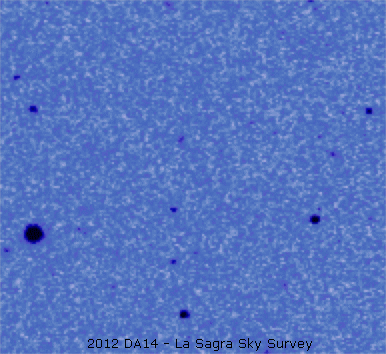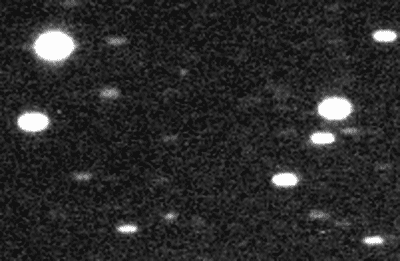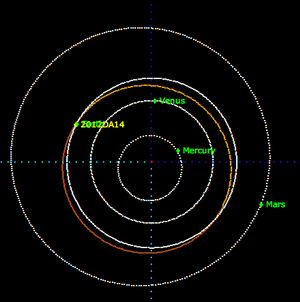Spotting an ancient asteroid
How to see 2012 DA 14 on 15 February
Asteroid 2012 DA14 will reach its maximum brightness of about 8 stellar magnitudes when rising above the horizon. This means that it will be too faint to be visible to the naked eye, but it can be picked up with a good pair of binoculars. It will approach Earth from the south, becoming visible in northern Europe in the evening, a couple of hours after sunset.
The precise time depends on the location of the observer.
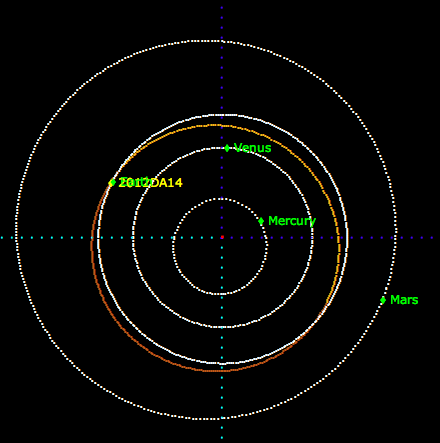
- For example, at ESA’s ESTEC Establishment in the Netherlands, 2012 DA14 will rise above the eastern horizon at 19:40 GMT (20:40 CET).
- It will move at about 0.7 degrees per minute. This means it will need only 40 seconds to move the apparent diameter of the Moon.
- It will rise above the horizon in the constellation Virgo, moving northwards left of the constellation Leo. It will move in the direction of the north celestial pole, reaching about 10th magnitude approximately two hours later in the Little Dipper.
- In the morning hours, it will have crossed half of the sky, moving slowly close to the Pole Star at a magnitude of 13. At this brightness, it will require a typical amateur telescope to see it.
Finding the object may not be easy because it is moving quickly. If you wish to see this once-in-a-lifetime passage, contact your local astronomy club.
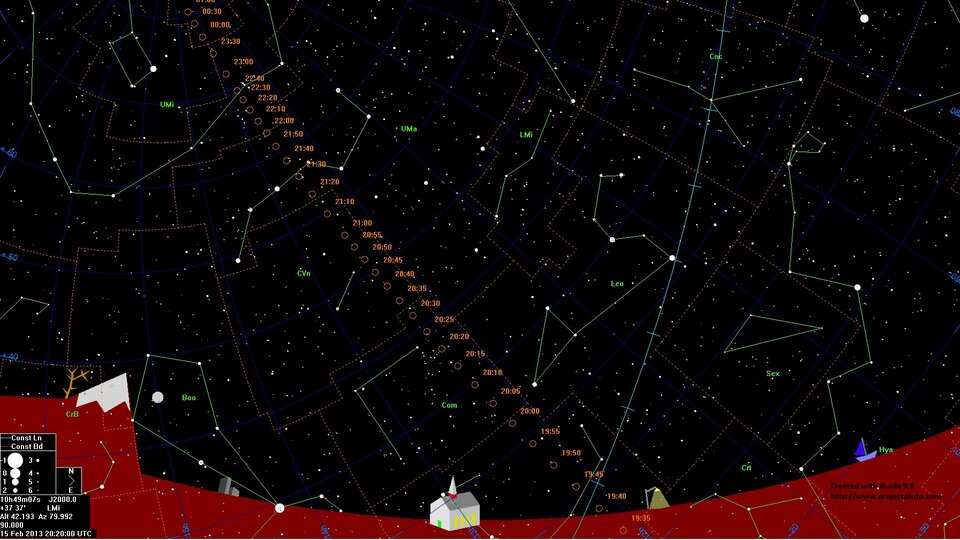
For those who are familiar with the night sky, the figure above shows a finder chart for the location of ESTEC; from ESOC in Germany it would still be roughly in the same area.
For ESRIN, close to Rome in Italy, the asteroid would appear about three lunar diameters to the left.
Zoomed section of finder chart - in constellation Coma Berenices

This chart shows the position of the asteroid about 15 min after it rises above the horizon. The blue circles are the position as seen from ESRIN (Frascati, Italy); the white circles from ESOC (Darmstadt, Germany); the orange circles from ESTEC (Noordwijk, The Netherlands). Times are given in UTC.




